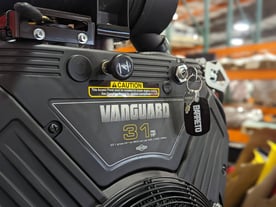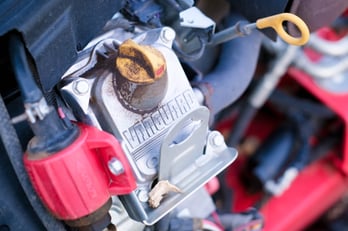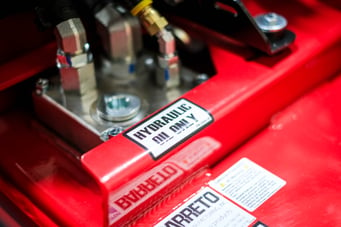Innovative Equipment Engineered to Last
Discover Barreto Manufacturing's 40 years of innovative, durable landscaping equipment, along with expert tips and local highlights for your projects.
Fall Tool Tips: Preparing Equipment for Winter
Fall is soon coming to a close, and the holidays are here. Before the season gets too busy, take a few extra steps to assess your fleet and prepare your equipment for winter by following these six best practices. Set up for a successful 2022 by winterizing equipment - it may save time and costly repairs when spring arrives and your equipment is ready to hit the rental road again.
6 Cold Weather Best Practices:
- Replace Engine Oil
- Drain Fuel, or Swap to Non-Ethanol & Add Fuel Stabilizer
- Clean and Dry Equipment
- Lubricate Components
- Covered or Temperature Controlled Storage is Best
- Tend Your Battery
Replace Engine Oil
If you’re wrapping up the season and you expect your equipment to sit tight for a while, spring for that extra oil change. It’s always best to maintain the health of your engine by staying regular with oil changes, but especially before storage, be sure to change your oil to eliminate the risk of dirt and debris sitting stationary in your machine.
Barreto machines come equipped with a special drain hose to make this process a breeze, so follow basic procedures to drain, refill, and run the engine to circulate the oil before powering down.
Drain Fuel, or Swap to Non-Ethanol & Add Fuel Stabilizer
The ethanol in fuel breaks down over time, making it hard on your engine and undesirable for long-term storage. So, you have a couple of options: drain the tank, or fill it with non-ethanol fuel. Ethanol is also corrosive, so swapping to non-ethanol fuel can extend the life of your system and keep things operational. If you’re not already using non-ethanol, fill up the tank and add a fuel stabilizer. This article is a great read to learn more about ethanol-related fuel problems.

Clean and Dry Equipment
You don’t want mud, plant material, salt, or rocks stuck anywhere in your machine. Give things a good power wash and scrub with soap and water to remove debris that could cause rust or inhibit the machine’s movement. It doesn’t hurt to polish it, either. Clean it up and put away when dry.
Lubricate Components
Possibly the most important step to the entire winterizing process is to lubricate all grease points. This keeps moving parts functional and rust-free. Refer to your Owner’s Manual for your machine’s grease diagram.
Covered or Temperature Controlled Storage is Best
Keeping equipment out of the elements will extend the life of your hoses and other parts. Consider a protective equipment cover, covered shelter, or preferably, indoor storage. Even equipment that lives in warm or tropical environments will benefit from being sheltered from rain, humidity, saltwater, pests, or extreme temperature fluctuations. It’s also likely more secure when tucked indoors, and makes maintenance simple with access to nearby tools in a comfortable environment.
Tend Your Battery
Cold weather zaps batteries. This can be mitigated by removing the battery from your machine and hooking it up to a battery tender that slowly trickles electricity to maintain the charge. For more tips, visit this article: Top 4 Tips for Winterizing Your Equipment.
Lastly, if you aren’t storing your equipment for winter but instead expect continuous work, here are a few pre-deployment checks:

- Check Tire Pressure - ensure the correct PSI for operation.
- Follow Cold Weather Startup Procedures
- Hydraulic oil can gel up in freezing temperatures - warm the engine before manipulating components.
- Let the Machine Warm Up - 5-10 minutes before use should suffice in order to circulate/warm fluids.
Taking care of business at the front end helps set you up for a successful 2022 rental season. Stay safe, stay warm, and enjoy this holiday season!
